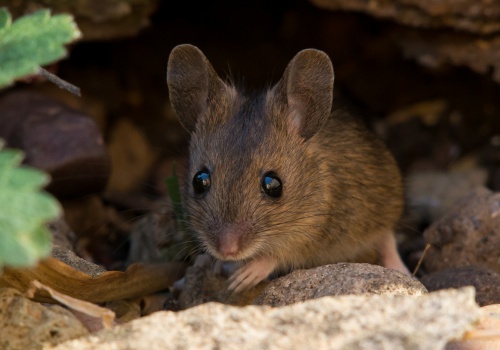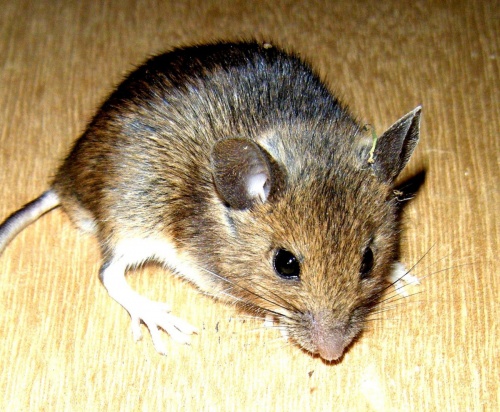Wood Mouse - Apodemus sylvaticus
This mouse is easily distinguished from the House Mouse by its larger ears and eyes and pale underside. They have soft, smooth fur which is sandy or orange brown on the head and back, yellowish on the flanks and white on the belly. The tail is almost as long as the body. They are about 10 cm long. The male is 25g - 30g and the female is 20g.
It will live just about anywhere there is food and shelter. It traditionally roams fields, hedgerows, forests and grass lands where it can find plenty of food. It is increasingly turning up in houses, particularly in autumn.
All year round. It does not hibernate.
They nest wherever there is cover and warmth, usually below ground but they can also be found in hedgerows, buildings, etc. It has 3 to 8 young (average is 5). The gestation period is 25-26 days. The life span is short - usually only a few months but it may survive longer. They are generally nocturnal animals with superb hearing and vision (hence the large eyes and ears). These mice are primarily seed eaters, relying to a great extent on the seeds of trees, but will also eat berries, invertebrates, worms, carrion and other similar food.
Widespread in Britain and Ireland and also on many of the surrounding islands.
Common in Leicestershire and Rutland.
Leicestershire & Rutland Map
Enter a town or village to see local records
MAP KEY:
Yellow squares = NBN records (all known data)
Coloured circles = NatureSpot records: 2020+ | 2015-2019 | pre-2015
UK Map
Species profile
- Common names
- Wood Mouse, Field Mouse, Common Field Mouse
- Species group:
- Mammals
- Kingdom:
- Animalia
- Order:
- Rodentia
- Family:
- Muridae
- Records on NatureSpot:
- 237
- First record:
- 08/03/2006 (Nicholls, David)
- Last record:
- 18/03/2024 (Philip Harper)
Total records by month
% of records within its species group
10km squares with records
The latest images and records displayed below include those awaiting verification checks so we cannot guarantee that every identification is correct. Once accepted, the record displays a green tick.
In the Latest Records section, click on the header to sort A-Z, and again to sort Z-A. Use the header boxes to filter the list.
















